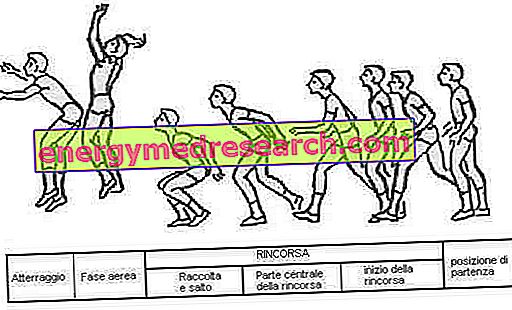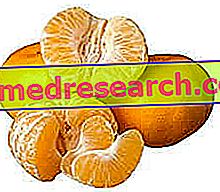What's this
What is Castelfranco variegated radicchio?
The Castelfranco variegated radicchio is a leafy yellow-green or cream-yellow leafy vegetable, spotted in red, spherical in shape but open - different from the radicchio of Chioggia, round, and the radicchio of Treviso and Verona, tapered. The taste is bitter and the characteristic but delicate taste.

From the botanical point of view, the Castelfranco variegated Radicchio is a herbaceous plant belonging to the Asteraceae (Compositae) Family, Cichorioideae Subfamily, Genus Cichorium and species (hybrid) intybus x endivia . It is a cross, selected between the XVIII and the XX centuries, between the late Treviso radicchio (red) and the green one - broad-leafed escarole. Note : in the mid-twentieth century, the Chioggia radicchio was diversified using the Castelfranco variegate to re-cross.
The Castelfranco variegated radicchio has the recognition of PGI - Protected Geographical Indication. The cultivation area also includes, in addition to the municipality of Castelfranco, several others in the provinces of Verona, Padua and Venice.
The Castelfranco variegated radicchio contains significant amounts of either vitamin A, or rather equivalent retinol (especially carotenoids), and vitamin C (ascorbic acid); therefore it is inserted in both the last fundamental food groups - VI and VII. It also contains a lot of water, dietary fiber, minerals - especially potassium and magnesium - and polyphenols - with particular reference to anthocyanins. Note the quantity of polyphenols is lower than that of the intybus species, ie of the red radicchio.
The Castelfranco variegated radicchio is eaten almost exclusively raw in salads.
Nutritional Properties
Nutritional properties of the variegated Radicchio of Castelfranco
The Castelfranco variegated radicchio belongs to the VI and VII fundamental group of foods - vegetables rich in vitamin C and vitamin A or RAE.
It has a very low caloric intake, since all three energy macronutrients are present in small quantities. Carbohydrates tend to be soluble, simple - made up of fructose. Fatty acids should be largely unsaturated and proteins of low biological value.
The Castelfranco variegated radicchio contains dietary fibers, most of which are soluble. There are plant steroid molecules, called phytosterols, with metabolic action opposite to cholesterol. These plant sterols belong to the broadest set of polyphenols, many others of which - especially anthocyanins - are also well present. It does not contain lactose, gluten or histamine. The contribution of purines is very low.
The Castelfranco variegated radicchio has an excellent concentration of vitamin C or ascorbic acid and retinol equivalent (RAE), in particular of beta carotene. The average intake of potassium and magnesium is remarkable. The concentrations of calcium and iron appear to be good, but they have a low level of bioavailability.

| Green Radicchio | |
| Nutritious | Quantity' |
Edible part | 95% |
| water | 88.1 g |
| Protein | 1.9 g |
| Lipids | 0.5 g |
| Saturated fatty acids | - |
| Monounsaturated Fatty Acids | - |
| Polyunsaturated Fatty Acids | - |
| Cholesterol | 0.0 g |
| TOT Carbohydrates | 0.5 g |
| Starch / Glycogen | 0.0 g |
| Soluble Sugar | 0.5 g |
| Food fiber | - g |
| Soluble | - g |
| Insoluble | - g |
| Power | 14.0 kcal |
| Sodium | - mg |
| Potassium | - mg |
| Iron | 7.8 mg |
| Football | 115.0 mg |
| Phosphorus | 45.0 mg |
| Thiamine or vitamin B1 | 0.06 mg |
| Riboflavin or vitamin B2 | 0.53 mg |
| Niacin or vitamin PP | 0.30 mg |
| Vitamin A or RAE | 542.0 mcg |
| Vitamin C or Ascorbic Acid | 46.0 mg |
| Vitamin E or Alpha Tocopherol | - mg |
Diet
Variegated radicchio of Castelfranco in the diet
The Castelfranco variegated radicchio is a food that lends itself to all nutritional regimes. The abundance of fibers and water and the low energy and fat density make it suitable for the slimming diet which, besides being hypocaloric, must be normolipidic - in compliance with the principle of nutritional balance.
Like all vegetables, Castelfranco variegated radicchio is not a good source of high biological value proteins. The quantity of essential amino acids and their proportion are in fact very different compared to the human protein model. Fatty acids, although predominantly unsaturated, being present in small quantities do not have a significant impact on the metabolism.
The abundance of fibers gives the variegated Castelfranco radicchio many beneficial properties for the body. Associated with the right amount of water, they increase the sense of satiety by increasing the volume of the meal in the stomach - a very useful feature in the slimming diet. Especially the soluble ones, create a gel that modulates the nutritional absorption through two mechanisms: they reduce the speed of absorption of glucides, decreasing the insulin glycemic index of the meal, they hinder the absorption and reabsorption of fats, especially cholesterol and bile juices - rich in endogenous cholesterol. The Castelfranco variegated radicchio is suitable for food therapy against hypercholesterolemia - in which the action of polyphenols contributes - type 2 diabetes mellitus and hypertriglyceridemia. The fibers contained in it improve intestinal transit, preventing / treating constipation and related disorders such as hemorrhoids, anal fissures, tendency to anal prolapse, etc .; at the same time, by optimizing the expulsion of toxins and other waste, they act as a protective factor towards some cancers of the colon. The fibers also nourish the intestinal bacterial flora - acting as a prebiotic - which also contributes to maintaining the health of the intestine.
The Castelfranco variegated radicchio has no contraindications for the diet of lactose intolerant, celiac and histamine intolerant. The low presence of purines makes it suitable for the nutritional regime against hyperuricemia and gout.
Vitamin C is a powerful antioxidant, as well as a precursor of collagen, an essential element of the immune system etc. Carotenoids, in addition to having an antioxidant function, can be recombined in the body to form vitamin A, which is necessary for visual function, for cell differentiation, to maintain reproductive function, etc. Polyphenols are the third antioxidant agent of the Castelfranco variegated radicchio. The high concentration of molecules equipped with this function makes this vegetable suitable for combating the oxidative stress of the organism, acting preventively against tumor evolution and hindering the onset of metabolic pathologies.
The wealth of water and potassium is considered a preventive aspect primary arterial hypertension, especially sodium-sensitive - potassium acts metabolically in contrast to sodium and water increases diuresis, favoring the elimination of the unwanted ion. Furthermore, these are two nutritional factors largely eliminated with sweat, greater in hot climates and in sports. Potassium and magnesium are alkalizing minerals that, when lacking in the body, can give rise to muscle cramps. The nutritional action of iron and calcium contained in the Castelfranco variegated radicchio is marginal.
Recall that, in the diet of the expectant mother, the raw Castelfranco variegated radicchio must be washed thoroughly and possibly in a solution with disinfectants, to reduce the risk of infection or infestation with bacteria or parasites that are dangerous for a successful pregnancy.
Kitchen
Cook the Castelfranco variegated radicchio - Castelfranco variegated radicchio in the kitchen
The Castelfranco variegated radicchio is to be consumed almost exclusively raw. The large and thick leaf makes this vegetable ideal for making salads. It also has a less bitter and more delicate taste than many other types of radicchio and, unlike other types of radicchio, many prefer it on its own - not mixed with lettuce, carrots and tomatoes.
The favorite condiments are: extra virgin olive oil, lemon juice, vinegar - even balsamic - and salt.
Botany
Botanical notes on the variegated Radicchio of Castelfranco
The Castelfranco variegated radicchio belongs to the family Asteraceae (Compositae), subfamily Cichorioideae, genus Cichorium and intybus species x endivia . It comes from the union between a red radicchio, more precisely that of Treviso, and a white or endive, more specifically the endive lettuce leaves ( C. endivia var. Latifolium ).
It seems to be one of the fundamental species with which the red species of Chioggia radicchio was obtained in the mid-twentieth century.



